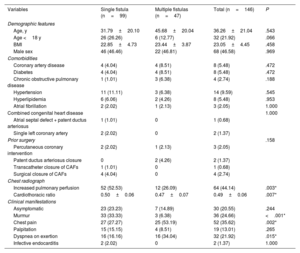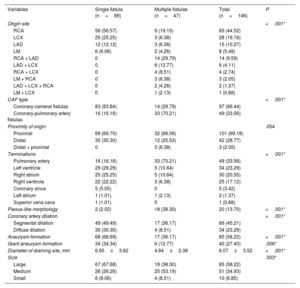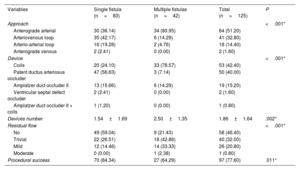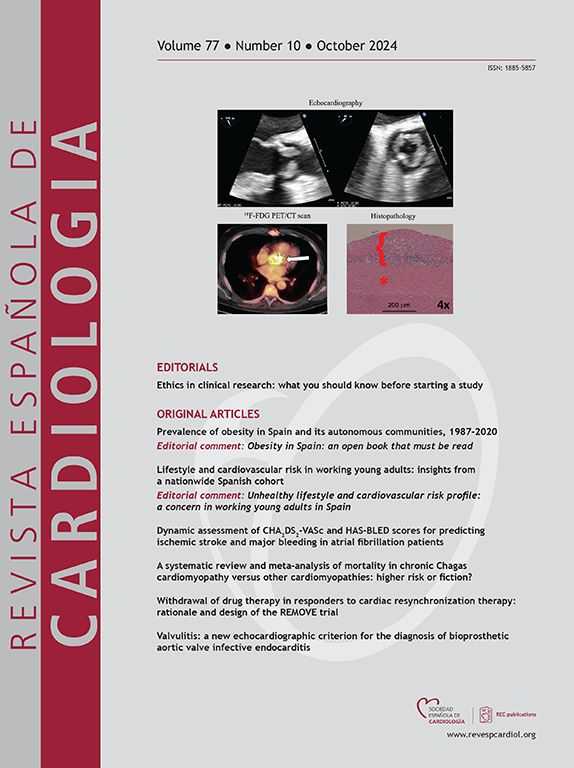
This study aimed to retrospectively analyze the anatomical characteristics and classification of multiple coronary artery fistulas (MCAFs), and to compare the outcomes of transcatheter closure between MCAFs and single fistulas.
MethodsAll patients who underwent attempts at transcatheter closure of coronary artery fistulas (CAFs) at Fuwai Hospital from 2010 to 2023 were retrospectively reviewed. Patients were categorized into single fistula and MCAFs groups, and anatomical characteristics and transcatheter closure outcomes were compared between the 2 groups.
ResultsThis retrospective study included 146 patients who underwent attempted transcatheter closure of CAFs, with a 14.38% failure rate. Among the 146 patients with CAFs, 32.19% were identified as having MCAFs, with types I, II, and III constituting 40.43%, 42.55%, and 17.02%, respectively. Unlike single fistulas, which predominantly originated from the right coronary artery and terminated in the left ventricle, MCAFs mainly had simultaneous origins from the right coronary artery and left anterior descending artery (29.79%), and predominantly drained into the pulmonary artery (70.21%), with a notable prevalence of plexus-like morphology (38.3% vs 2.02%, P<.001). The success rate of transcatheter closure was significantly lower for multiple fistulas compared with single fistula (64.29% vs 84.34%, P=.011). Multivariate regression analysis indicated that the risk of closure failure for MCAFs was 2.64 times that of single fistulas.
ConclusionsMCAFs are common among CAFs and can be classified into 3 types based on the number and location of their origins and terminations. The risk of failure of transcatheter closure is significantly higher in MCAFs than in single fistulas.
Keywords
Identify yourself
Not yet a subscriber to the journal?
Purchase access to the article
By purchasing the article, the PDF of the same can be downloaded
Price: 19,34 €
Phone for incidents
Monday to Friday from 9am to 6pm (GMT+1) except for the months of July and August, which will be from 9am to 3pm










